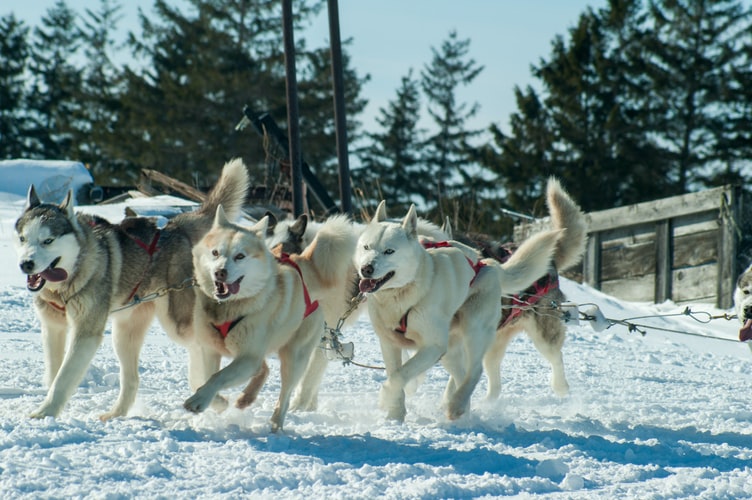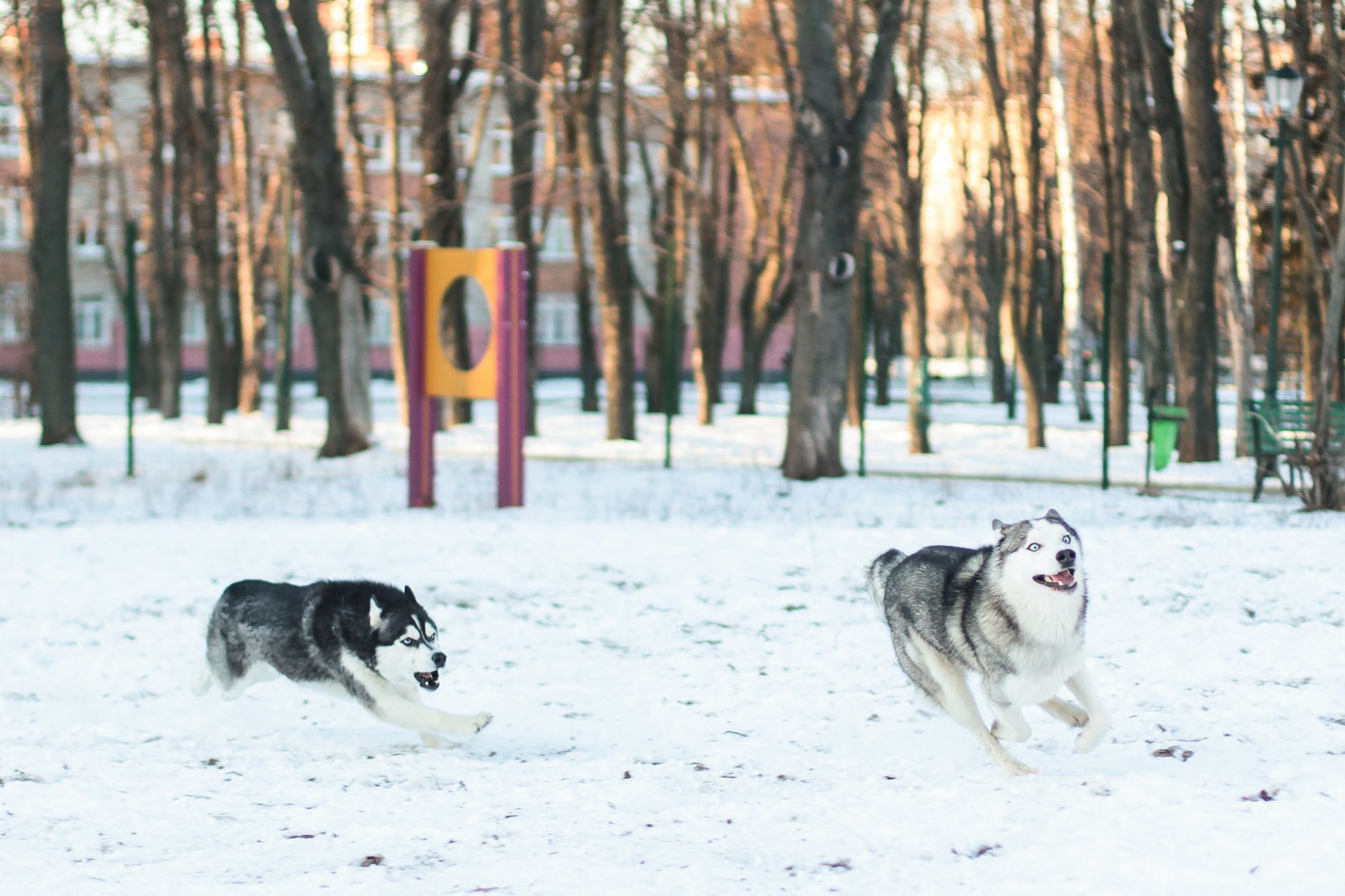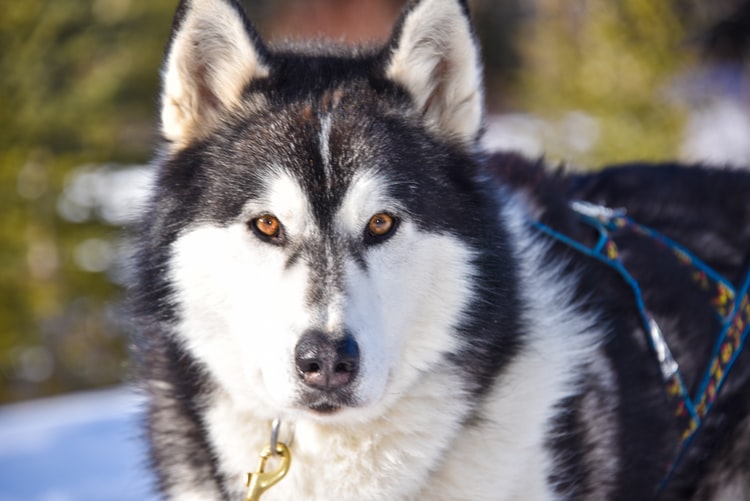
WORLD SLEDDOG ASSOCIATION (WSA)
“We are the largest organization globally dedicated to purebred sled dog racing. By organizing races for FCI recognized sled dog breeds, we aim to contribute to the preservation of these ancient breeds while providing them with an opportunity to do what they love. We are passionate about protecting and promoting the health and welfare of our dogs and about bringing together mushers from across the world to share their passion and learn from each other.”
FROM THE WSA CODE OF ETHICS
- “When deciding how many dogs to own, it is important to consider how much money and time can be dedicated, and what zoning laws and living situation will allow. Keeping kennels the size one can care for properly will allow to avoid future problems.”
- “The basic education of each dog is important for its welfare and safety.”
- “Runs or pens must be large enough to allow dogs to perform most behaviors that are typical of their species. Good weather protection must be provided.”
- “Chain attitude is rejected. The dog or dogs should have his/her kennel area accessible with the ability for he/she to move around accordingly and be able to stay occupied. The dogs urge to move, the ability to learn and the other ways of a dog being must be encouraged and supported. Along with that, a dog must have plenty of activities to get sufficient exercise; for example letting the dog free run. For this purpose, the activities mentioned above, should be to put as a standard for the basic training for a dog.”
- “An excellent way of staying busy and active is the sled dogging sport as well as the various other possibilities of dog sports in general.”
- “It is important to properly train and condition dogs and never push them to perform beyond their capabilities. Usage of performance-enhancing drugs and harmful training methods are strictly prohibited.“
- “A responsible Mushers will participate in events only with healthy, well trained and conditioned dogs. Ambition or financial motives should never overrule animal welfare.”
- “Above all, it is unthinkable to shorten the life of a dog for financial reasons, lack of space or because the animal’s performance is not up to expectations.
- “The killing of vertebrates is regulated by the Animal Protection Act of each country and clearly prohibits killing for above reasons.”
- “Ethical people will grant their dog a pleasant last stage of life according to its age and health. This demonstrates their gratitude towards the animal for being a reliable friend and partner over many years.”
- “Unfortunately, in some countries it is permitted to keep dogs on chains. Nevertheless, this practice should be rejected by all sled dog organizations nationally and internationally. Sled dog organizations should engage with mushers practicing this with the aim to abolish this practice.”

The Foundation: The Five Freedoms Model – First Edition (2013)
These Five Freedoms are globally recognized as the gold standard in animal welfare, encompassing both the mental and physical well-being of animals; they include: freedom from hunger and thirst; freedom from discomfort; freedom from pain, injury, and disease; freedom to express normal and natural behavior; and freedom from fear and distress.

FREEDOM FROM HUNGER: Sled dogs should receive daily, high-quality food, of a sufficient amount for each animal. A varied diet of various types of meat and dry foods, including minerals and vitamins, is recommended. Dogs should also have constant, plentiful clean water, and be provided with clean water buckets and food receptacles.

FREEDOM FROM DISCOMFORT: Secure, well maintained yards are preferred – as they allow for regular exercise and can accommodate a number of animals comfortably. Individual housing should be well maintained and clean – including clean, dry bedding – and should provide protection against heat and cold.

FREEDOM FROM PAIN: Sled dogs should have regular access to veterinary care, including at least one annual health check. Euthanasia should only be performed by a licensed veterinarian, and only in the event that the animal is suffering from an incurable disease, or suffering from severe pain which cannot be alleviated.

FREEDOM OF EXPRESSION: Sled dogs should have plenty of exercise, stimulation or socialization to avoid anxiety, aggression and other behavioral problems. Toys and daily time for play and stimulation should be provided. In the kennels, social grouping, compatibility and dominance amongst animals should be recognized and respected.

FREEDOM FROM FEAR: Evidence of physical or psychological abuse of sled dogs is unacceptable – dogs should appear energetic, take an interest in their surroundings, and demonstrate fearless interaction with people. Calm, positive handling should be utilized.

Global Welfare Guidance for Animals in Tourism (2019)
“Our aim is to provide balanced and science-based information around current best practice to ensure that both animal welfare and the quality of the customer experience are given a priority.”
Association of British Travel Agents (ABTA)
The ABTA Animal Welfare Guidelines Overview manual and its supporting guidance manuals build upon the principles of the extended Five Domains Model (developed by Mellor & Beausoleil (2015), originally based on the Farm Animal Welfare Council’s Five Freedoms (FAWC 1979)) and the Welfare Quality® criteria. The extended Five Domains is the most contemporary and well-accepted framework for measuring animal welfare. The main improvement from the Five Freedoms, on which it was based, is the consideration of positive welfare as well as negative, since minimizing negative welfare states does not automatically guarantee positive ones.
This manual has been developed by the Association of British Travel Agents (ABTA) working with their consultative partner, the Born Free Foundation, and has been further developed through a multi-stakeholder consultation process involving industry experts, scientists, zoologist organizations, associations and non- governmental organizations (NGOs) from around the world.
Examples of practices that do not meet basic welfare requirements, and examples of corresponding best practices:
- SUBPAR: Providing water only once a day and not allowing the dogs time to drink.
BEST: Plentiful clean water. - SUBPAR: Dirty, stagnant or contaminated water.
BEST: Use clean water buckets and food receptacles. - SUBPAR: People assuming that animals are trained or accustomed to hard work and habituated to a harsh life; they therefore work the animals too hard.
BEST: Dogs appear energetic, take an interest in their surroundings, and demonstrate fearless interaction with people. Evidence of physical or psychological abuse of sled dogs is unacceptable. - SUBPAR: Irregular or no veterinary health checks.
- BEST: Dogs should have regular access to veterinary care, including at least one annual health check.
Overview of indicators of poor animal welfare in sled dogs and their common causes:
- INDICATOR: Excessive barking, fighting, stereotypical behavior.
- CAUSE: Frustration/boredom/nervousness due to tethering/chaining and inability to socially interact with others.
- INDICATOR: Vomiting, diarrhea.
- CAUSE: Stress from physical over-exertion, resulting stomach ulcers, intestinal viruses.
Most up to date manual (from which this section is designed) not available without ABTA membership or purchase.

EXPERT OPINION STATEMENT REGARDING INDUSTRIAL SLED DOG OPERATIONS (2021)
Debi Zimmermann B.Sc.(Zoology), D.V.M.
“The commercial sled dog operators push their dogs’ psyche, their physical structure and their physiologies to the limit – and often beyond – yet industry stakeholders are allowed to highly influence the setting of sled dog welfare standards.”
- Eating snow is not an acceptable option. Contrary to popular belief, animals cannot get adequate hydration from snow. “Eating snow is not the same as consuming water because snow is a solid that must melt before it becomes a fluid. Cells and organs in the body need water to be in a liquid state, so the body must work to heat and melt the snow once it is eaten. Because the organs must work harder to heat the ice and melt it, you will become further dehydrated rather than hydrated. You will continue to lose more water than you are taking in, even though you are hydrating the body by eating snow”.
- As the dogs are typically tethered from age 6 months onwards, there is a risk for their collars to cut into their neck as they outgrow them it if not checked frequently.
- The constant irritation of the collars against their necks while pacing around in circles can cause skin conditions including hair loss, a mechanical burn and/or open sores that can lead to a serious weeping bacterial skin infection, colloquially called ‘Collar Rot”.
- The sled dogs are also at risk of injury from the heavy chains they are tethered to-either by it wrapping around and strangulating a body part or catching on a part of the doghouse and compromising movement and/or breathing.
- The incessant pacing, especially on ice can leave footpads raw and bleeding-a very painful condition and at risk for infection, especially in the unsanitary conditions they were forced to live in.
- It should be noted that tethering is denounced by the Canadian Veterinary Medical Association which states in their Codes of Practice For Canadian Kennel Operations-Third Edition (which includes sled dog facilities) “Tethering of dogs (i.e., chains or ropes used to tie the dog to an immoveable object such as a stake or building) is not allowable as a method of confining a dog to a primary enclosure.
- Tethering also denies these pack-oriented animals interaction with their own kind. They are stationed mere inches from their neighbor, without being able to greet, sniff, play with or otherwise interact with them. It is a cruel form of torment. And for a highly gregarious species like canines, having no control over social interactions or attachments causes them significant frustration and psychological distress which is only compounded by the thwarting of numerous natural drives.
- These highly intelligent and naturally social dogs are relegated to living vacuous lives at the end of a six foot chain. They are cut off from each other and the world around them and have no control over any aspect of their lives. A dog kept chained in one spot for days or months let alone years, suffers immense psychological damage.
- The most severe punishment we can administer to humans, another highly intelligent and social species; is life imprisonment where all freedoms are removed; no choice on when and where to sleep, when and what to eat, when and with whom to interact with and where, when and for how long one can exercise.
- Science has shown that humans and other vertebrates are similarly affected by confinement, isolation, pain and psychological, emotional, physical and social deprivations (G.A. Bradshaw, Elephants On The Edge (2009), pg 204). Life for a sled dog is essentially a life sentence of solitary confinement.
- The already meager anti-cruelty legislation that protects ‘companion’ dogs, is suspended for ‘sled’ dogs – even if the same dog were to assume different roles. Here, members of the same species – possibly even of the same litter – are treated differently by the legal system – based entirely upon their utility to mankind.”

TOWARDS PROHIBITING THE CHAINING OF DOGS (2021)
PHOTO CREDITS: SHAY THE ACTIVIST
A VETERINARY PERSPECTIVE:
“Considerations about health and welfare of chained and tethered dogs.” – Dr. Heather Rally, DVM
Being restrained by a tether is a highly distressing and vulnerable condition for a dog. Chaining and tethering deprive a dog of basic freedom of movement and the ability to express normal behaviors, including the ability to retreat from a real or perceived threat. A tethered dog is acutely aware of his or her inability to move about freely or escape in the face of danger.
Spatial restriction and social isolation, as are caused by persistent tethering and penning, result in proven damage to a dog’s physiological and psychological health. Tormented dogs intentionally confined to deprived environments in research laboratories have developed indications of chronic stress when subjected to social and spatial deprivation. These studies demonstrate that prolonged exposure to constrained and socially deprived environments negatively affects the long-term well-being of dogs, including by compromising their ability to cope with normal existence.
The environmental and social deprivation that occurs in situations where dogs are persistently chained leads to the development of abnormal coping behaviors such as repetitive, invariant, functionless behaviors called stereotypies. Stereotypic behaviors are associated with diminished welfare. Consistent with this, field observations of chained and tethered dogs show that they demonstrate an array of stereotypic behaviors including frantic pacing and compulsive circling, and they quickly become overstimulated, often demonstrating manic behavior.
Indeed, chronic confinement to an impoverished environment where animals are unable to engage in basic and essential behaviors actually causes direct physical damage to the brain. Thus, persistently chained, tethered and otherwise intensively confined dogs are prone to depression, anxiety and brain dysfunction, especially in the face of repeated inescapable pain, trauma or stress.
AN ETHOLOGICAL PERSPECTIVE:
“Existential limitations, pain, suffering, and anxiety in dogs: an ethological perspective on vertebrates in distress.” – Prof. Enrico Alleva
It is perhaps since their early history and evolution that humans have established links of synergy and mutual support with domesticated wolves (dogs). Indeed, thanks to their olfactory system (a useful sensory aid for humans), ability to detect and retrieve prey (as well as vegetal products), and controlled but robust intraspecific aggressiveness, dogs have been used for purposes of guardianship, theft deterrence, as well as, for a long time, in wars.
The chaining or tethering of dogs serves utilitarian purposes of both an immediate and long-term nature: restricting their movements and thus minimizing their potential damage; preventing them from escaping or moving too far; and making their daily handling more manageable, albeit in a hasty and unethical way. Unfortunately, the chaining or tethering of dogs has also become a despicable and immoral practice that has been used to intensify their aggressiveness.
As is known, stress causes agitation, anxiety, and irritability, disrupting the natural mechanisms governing the release of internal energy and anger. Over time, due to remote evolutionary factors, the minds of animals, especially of mammals, have responded to stress with a variety of natural acts. These acts have been channeled towards lower energy expenditure, consistency with the stress-generating setting, and coping behaviors that could redress the imbalance of the stressed individual, under a patent and usually efficient mechanism of neurophysiological homeostasis.
Persistently chained or tethered dogs are animals experiencing very deep suffering, because some of the basic principles underlying their ethological mechanisms are being violated. Hence, they will release an unbridled energy to the advantage of those who have so cruelly subjected them to a refined and historically consolidated form of torture.

RISK OF NEGATIVE EFFECTS ON THE WELFARE OF DOGS ASSOCIATED WITH BEING HOUSED OUTDOORS OR USED FOR SLED DOG RACING (2017)
- “1.2.1 Welfare challenges related to outdoor housing of dogs: Dogs are social animals and easily become attached to people. If dogs are kept outdoors, they may experience less contact with humans than dogs living inside human homes. Although a couple of minutes of daily contact with humans are enough to build attachment in dogs, sufficient social stimulation is crucial to prevent negative welfare consequences due to social isolation. Positive interactions (e.g., play, more gazing at humans) were found to lead to increases in the hormones β-endorphin, oxytocin, prolactin and the neurotransmitter dopamine in both humans and dogs, and even cortisol levels were decreased in humans after playing with their dogs. Oxytocin plays a major role in developing and maintaining strong social bonds in mammals. The positive social interactions between humans and their dogs can lead to closer attachment between dogs and owners (a process in which this hormone can act as the main driver of positive feedback). Thus, these positive social interactions not only have short-term positive effects on welfare, but also improve the relationship between dog and owner in the long-term.”
- “1.3.1 Physical activity in sled dogs throughout the year: Sled dogs that are subject to extreme activities during competition, as well as during the training season, may experience diminished animal welfare. Lack of exercise outside the training season could also present welfare problems among these dogs. In a study conducted on Alaskan huskies during summer, Delude found that the dogs spent more than 80% of time in recumbent posture, mostly with their eyes closed. This can be a sign of boredom and result from lack of stimulation. These dogs were tethered individually and had access to their own dog house, but had limited physical contact with other dogs.”
- “1.3.2 Animal health challenges in sled dog racing: In addition to physiological stress, sled dogs are likely exposed to psychogenic stress in the form of exposure to unfamiliar environments, interactions with unfamiliar conspecifics, and the race itself. A stressful environment and an anxious personality are associated with large bowel disease in dogs. Dogs undergoing significant physiological stress in the form of exposure to physical exertion of a sled race are at increased risk of developing gastric lesions.”
- “In published studies, based mainly on the long-distance sled dog races Iditarod and Yukon Quest, the main reasons of retiring dogs from races are listed as lameness, excessive fatigue, diarrhea, and sore feet. The exact prevalence of the different reasons for removing sled dogs from long-distance races are not normally specified or published, and the data presented below are based on 8 and 32 dogs. Therefore, conclusions cannot be reached based on these limited data, but should be considered as describing possible trends. Where the prevalence of these problems are specified, excessive fatigue was recorded in 47% and 63%, lameness or pad injuries in 41% and 25%, diarrhea in 6% and 13%, dehydration in 3% and fever in 3% of cases.”
- “In 23 dogs that died during the Iditarod Trail sled dog races between 1994 and 2006, recognized causes of death included aspiration of gastric contents, aspiration pneumonia, acute blood loss secondary to gastric ulceration, and sled dog myopathy. Pulmonary oedema, brain oedema, and possible drowning, were the presumptive causes of death identified in three more dogs. The cause of death was not established for the remaining seven dogs. The study population represented 0.15 % of approximately 15,600 competing dogs. Lesions commonly observed in the dogs with race-related deaths included rhabdomyolysis, enteritis, gastritis, gastric ulceration, aspiration pneumonia, centrolobular hepatocellular necrosis or centrolobular hepatic fibrosis, gastric dilatation, and cardiac myodegeneration and necrosis.”
- “According to information from the Norwegian Veterinary Institute, ten sled dogs were autopsied during 2005-2016. Information regarding time of death (e.g., during or shortly after a race) was not available. Main lesions observed in these dogs were cardiac insufficiency, pneumonia, and dehydration/chronic nephritis. In two dogs there was no diagnosis due to autolysis.”
- “A substantial proportion of well-trained sled dogs that die during competition lack lesions to account for death. However, in contrast with equine and human athletes, unexpected death of endurance-racing dogs may result from aspiration pneumonia, gastric mucosa lesions, and sled dog myopathy.”
- “Stiffness and lameness are common among dogs participating in long-distance races. Stiffness often becomes evident after rest, but usually disappears when the dog starts moving and warms up. The observation time must be sufficient for deciding whether or not the condition is transient. Lameness is a common cause of dogs being excluded from a race.”
- “Sled dog myopathy may present as mild and of little clinical significance, and is likely to be associated with muscle fatigue and transient pain and stiffness. Myopathy may also be extensive, involving large areas of muscle. It is then considered as a life-threatening condition. The cause of sled dog myopathies is still unknown, but the pathogenesis may involve oxidative stress, electrolyte imbalance, lipid disorders, mitochondrial injury, or metabolic alterations. Deficiencies in nutritional components, such as vitamin E, have been suggested as possible predisposing factors. However, there is no documented association between prerace plasma vitamin E concentration and the risk for development of exertion-associated rhabdomyolysis. Administration of an antioxidant supplement failed to attenuate exerciseinduced increases in plasma creatine kinase (CK) activity in sled dogs.”
- “The prevalence of gastrointestinal inflammation in conditioned sled dogs is unknown, but histologically verified gastritis and enteritis were common among 23 dogs with race-related deaths. The histological changes were nonspecific and usually mild, and in no instance was a primary aetiological agent identified. It is therefore unclear whether these lesions are exercise related or more strongly influenced by the unique husbandry of sled dogs. Inflammation of the gastrointestinal mucosa does not seem to be prevalent among humans or equine athletes.”

COMPARISON OF TETHERING AND GROUP-PEN HOUSING FOR SLED DOGS (2005)
- ”Long-term tethering of sled dogs produced evidence of significantly higher levels of alert and repetitive behaviours such as fast pacing, and significantly fewer social behaviours than the un-tethered housing condition. Placing participants in un-tethered (group housing) significantly reduced rebound and repetitive behaviours.”
- “Levels of aggression were highest in the tethered non-exercise conditions. By contrast the most aggression occurred in the condition with the least stimulating condition, when there were fewer caregivers in the kennel and no exercise provided. When stimuli were presented, such as a caregiver walking through the grounds, dogs would react with a frustrative response which was re-directed onto neighbouring dogs. If the tethers allowed physical contact, aggression took the form of nipping neighbouring dogs’ noses and tails. Although actual physical contact rarely occurred, there was evidence that these aggressive responses were not inhibited and that injury would have occurred more frequently had the tethers allowed more contact.”

A COMPARISON OF TETHERING AND PEN CONFINEMENT OF DOGS (2001)
AKA “THE CORNELL STUDY”
- The Cornell study does not in and of itself support the premise that the permanent tethering of dogs is an acceptable form of housing. It is important to note that the conclusion of the study does not indicate that all of the physical or psychological needs of the dogs had been met while they were permanently tethered. Rather, the study concludes that the behavior of dogs who had been permanently tethered their entire lives did not improve once they were confined permanently in pens. Thus, the study compares the permanent tethering of dogs to the permanent confinement of dogs in cages, which is an equally unacceptable manner of permanently housing dogs.
- The Cornell study only studied the behavior of dogs that had lived their entire lives tethered, and, as pointed out by the authors, this had a confounding effect on the results of the study. Thus, the dogs that were the subject of this study “had spent most of their adult lives on tethers and were now in an environment they had not lived in since they were puppies.” Animals that are under-socialized or subject to neglect often do not have a positive reaction to normal stimulus and activities because they are simply so foreign to them, but this does not mean that these normal activities and stimuli are not important for the long term development and socialization of the animal.

ORGANIZATIONAL POSITION STATEMENTS
United States Department of Agriculture (USDA)
"On August 13, 1997, the United States Department of Agriculture amended the regulations for the humane treatment of dogs under the Animal Welfare Act by removing the provisions for tethering dogs as a means of primary enclosure... Our experience in enforcing the Animal Welfare Act has led us to conclude that permanently tethering a dog as a means of primary enclosure is not a humane practice that is in the animal's best interest."
Canadian Veterinary Medical Association (CVMA)
"Tethering of dogs (i.e., chains or ropes used to tie the dog to an immoveable object such as a stake or building) is not allowable as a method of confining a dog to a primary enclosure, nor as the only means of containment."
Humane Society International (HSI)
"Never leave a dog outdoors unattended on a chain or tether. Long-term chaining during the hot summer months can result in countless insect bites, dehydration and heat stroke."
Montreal Society for the Prevention of Cruelty to Animals (MSPCA)
"Permanent chaining is inhumane, as it is detrimental to dogs’ physical and psychological well-being. Chained dogs are at increased risk of injuring themselves and are frequently neglected. They are exposed to extreme cold in the winter, and suffocating heat in the summer. Isolated, unable to socialize, play, exercise, or express natural behaviour, chained dogs develop severe boredom and frustration, eventually leading to psychological distress."
British Columbia Society for the Prevention of Cruelty to Animals (BCSPCA)
"Tethering significantly limits the ability of dogs to experience the Five Freedoms. Dogs who are tethered outdoors for the majority of their lives are at risk for physical harm, neglect and health problems. Some examples of this include water becoming frozen, being attacked by wildlife or other dogs, getting entangled in the tether and being forced to defecate and sleep in the same space... Research has demonstrated that dogs raised and housed under conditions of social and environmental restriction... tend to become excitable and reactive, demonstrating fear and/or aggression in response to environmental change."
Federal Act on the Protection of Animals – Austria (TSchG)
"The freedom of movement of an animal must not be restricted in any way as to inflict any unnecessary pain, suffering or injury or extreme anxiety. It is prohibited to keep animals permanently tethered."





